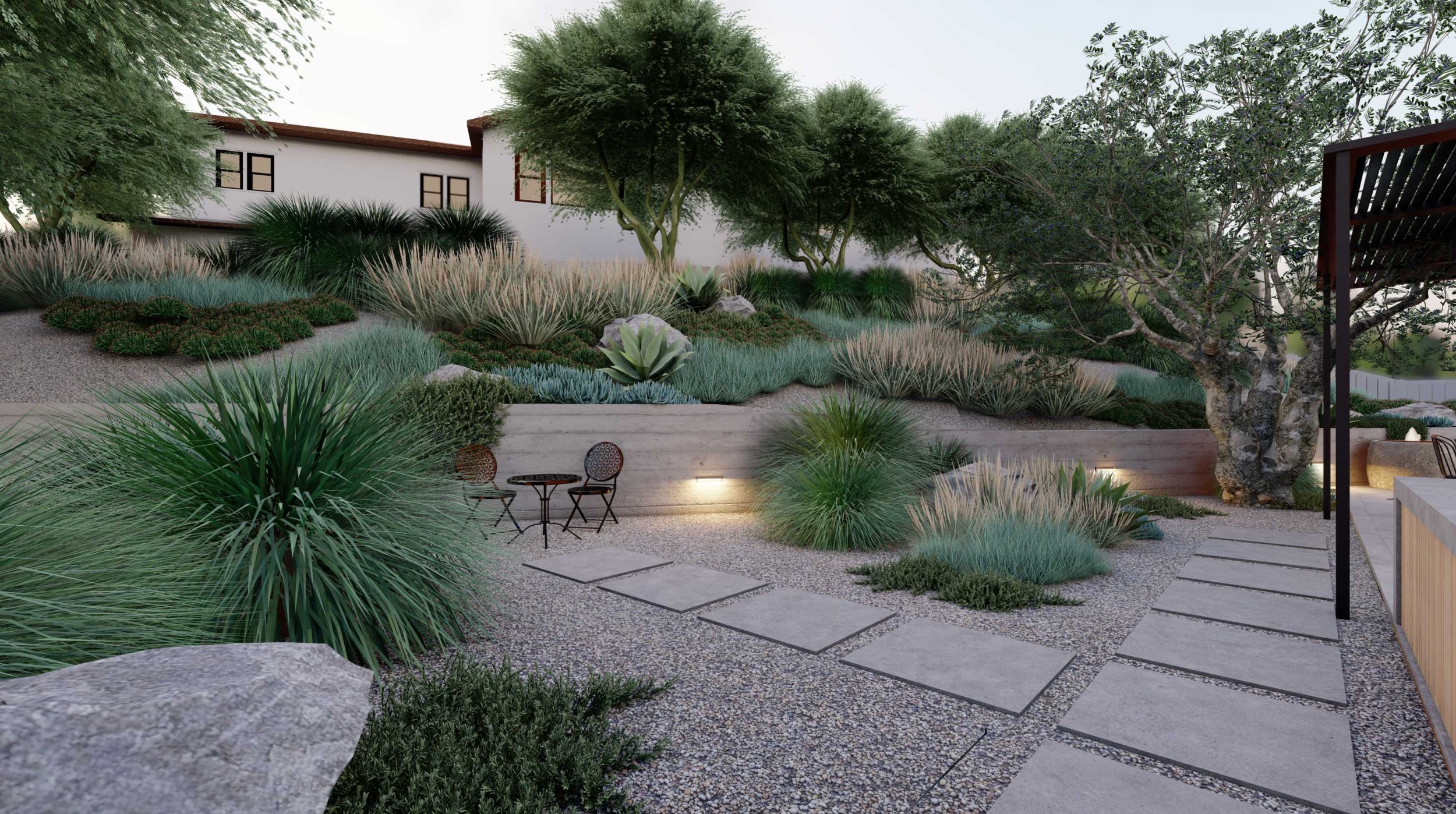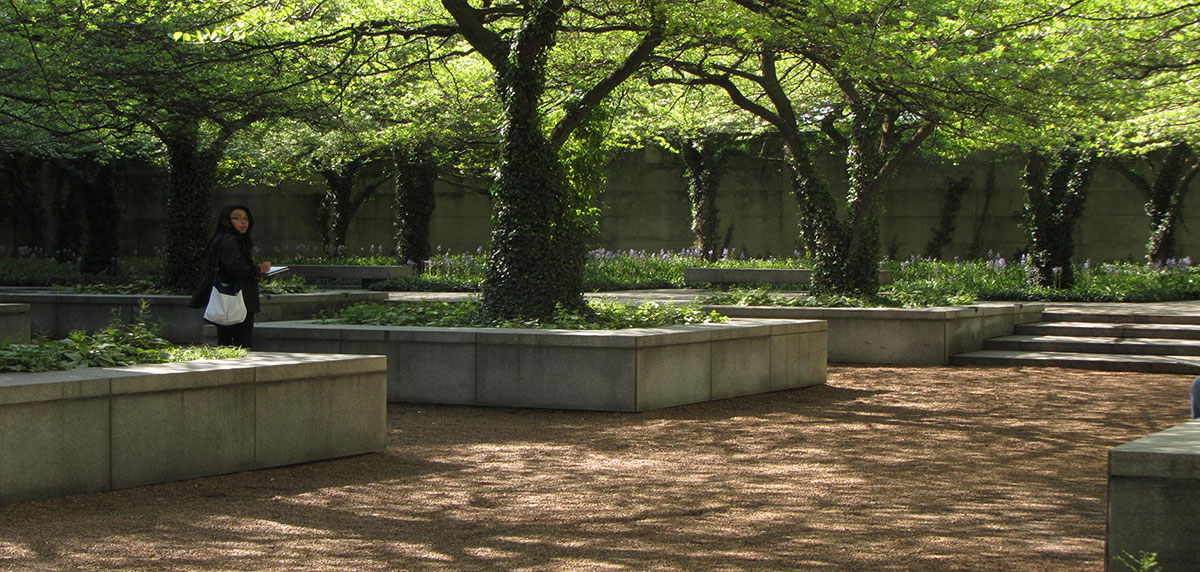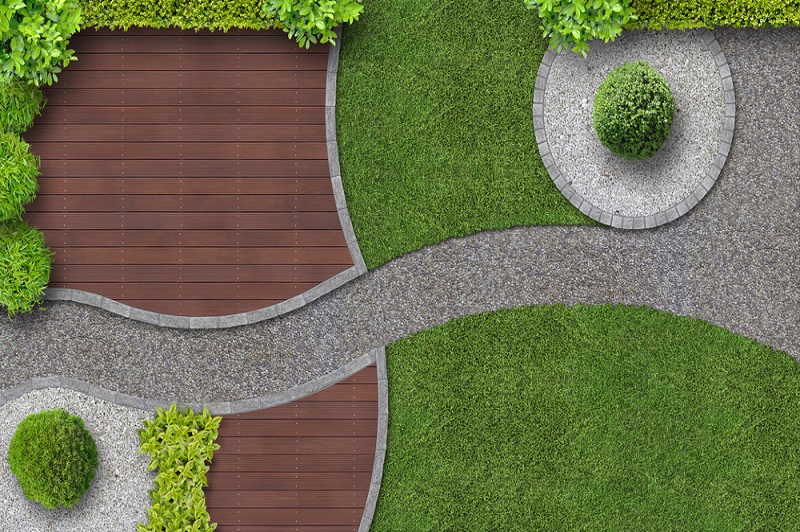3 Easy Facts About Landscapers Shown
The Best Guide To Landscapers
Table of ContentsThings about LandscapersThe Single Strategy To Use For LandscapersFacts About Landscapers UncoveredThe 5-Minute Rule for LandscapersThe Greatest Guide To LandscapersFascination About Landscapers
- A garden attribute where water is represented by an aggregate rock item, typically a crushed rock or granite. These are most commonly discovered in modern-day and Japanese garden style.- A rock or natural flagstone patio, path, or pathway developed without a concrete base. The base would certainly be compressed gravel and the joints would certainly be an aggregate or walkable ground cover. - A rock maintaining or complimentary standing wall surface developed without the use of mortar. - An underground structure that collect water and permits it to slow percolate into the dirt around it.
Landscape style that is compatible with a websites' environment in both look and sustainability without adverse effects to the environment. Bordering in the landscape is a line of demarcation that produces visual passion in the yard by separating one sector from another segment.
Locations can likewise sense of "unit" offered by trees, other growings, fences, or displays. The landscape near the entrance to a building. A tree, shrub or creeping plant, trained to expand on a wall or fencing right into a certain pattern. Particularly useful for fruit trees, making it simple to harvest the fruit and containing mess.
Facts About Landscapers Uncovered

The element in a landscape design or area in a landscape that is meant to be most prominent. The focal factor can be a plant, rock, sculpture, gathering space, or other landscape attribute.

The 9-Second Trick For Landscapers
Low plants that are allowed or motivated to spread out over a location. Can refer to any kind of "hard" garden components consisting of statuary or rocks but many commonly is used to refer to paths, outdoor patios, and walls - Landscapers.: Elevation distinction between the level of water in a fish pond (or the level of the pump if it rests outside the fish pond) and the upper outlet of water which influences efficiency of the water pump in gph (gallons per hour).
Fence boards that run flat, commonly made use of in modern-day or Japanese-inspired landscape styles. Appropriate use of imaginary lines can help the landscape really feel attached to the home and various other aspects.
An even more unwinded garden dominated by curved instead of straight bed lines and a much less stiff structure. Traditional PNW landscapes are casual. A plant that spreads even more than preferred, or into habitats where it does damages. Portland has click here now a list of intrusive plants that must not be installed in landscapes because they can spread out to forests or waterways and be difficult to control.
The 6-Second Trick For Landscapers
Smart irrigation controller evaluations and recommendations below. 2-D rendering of the recommended irrigation system. Can consist of head positionings and protection, pipe sizing, GPM specifications, and products needed to mount this system. A watering plan is generally unnecessary for homes however is usual for industrial projects. Certified specialist that makes landscapes, schooled in design and architecture as well as in gardening.
The expert that intends and creates landscape projects, typically at a residential or small industrial degree with the significant layout motivation on plantings. Landscape developers usually have much less education than Landscape Architects and are not accredited. A finished landscape layout, describing all elements for the new landscape. This typically takes the type of a drawing on paper.
Utilizing numerous plantings of the very same range to fill in a location in the landscape. This can reduce upkeep and water usage in the garden.
A mix of concrete, sand, and water that is utilized in rock masonry for establishing rocks and joints. A layer of garden compost or bark dust used at the base of a plant. A mass planting of moss. A plant that existed in a geographical place before individuals started transforming the landscape.
Not known Factual Statements About Landscapers
How the yard or a garden component is organized in partnership to an existing or new function or to a direction. Preserving a grass without using chemical herbicides, pesticides, or plant foods. Grasses that are not cut yet grown in landscapes as perennials. This is a partially open sided leisure or leisure area that adjoins a home, made use of for entertaining, outdoor dining and just delighting in the outside environment.

Plants that give seasonal rate of interest and then die back in the winter. Cold season grass that is the most usual turf grass in Portland, OR and the remainder of the PNW.An open roofed structure over a patio area or other landscape feature.
The most common landscape crushed rock in the PNW. Area of the landscape made to deal with rainfall water until it can soak right into the ground.
Framework constructed from wood, concrete, leading rocks, bricks or other products for stabilizing inclines and preventing extreme disintegration. Slim gutter. Creating a garden attribute consisting mainly of rocks with plantings that try this match and can grow in the rough environment. Lawn sprinkler head design that rotates a stream of water throughout a location.
Landscapers Can Be Fun For Everyone
